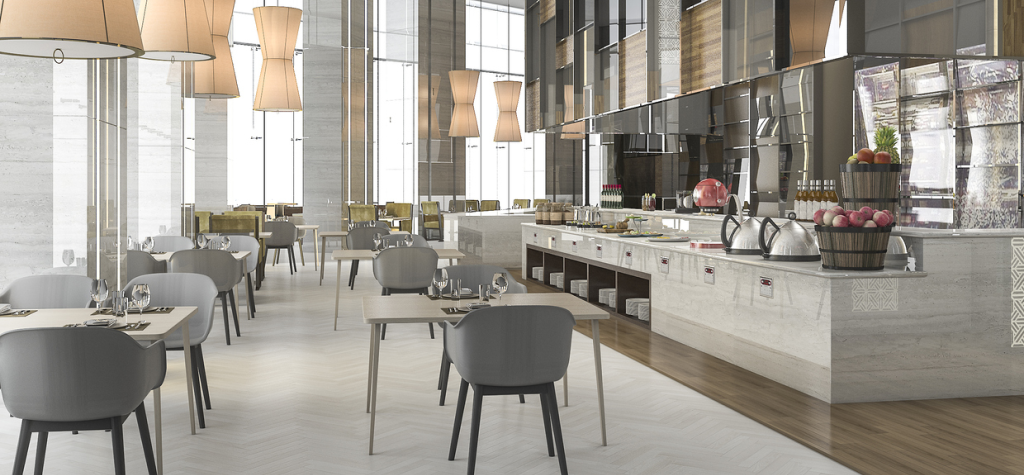COVID-19 isn’t likely to leave any industry untouched. These are some of the key ways in which the pandemic could transform the future of restaurant fit-outs and refits. Make sure your business’ venue is ahead of the curve by contacting one of our specialists here at Cumberland Group for your next project.

How will restaurant fit-outs be transformed by COVID -19?
COVID-19 has had a huge impact on the hospitality industry and, in particular, businesses that serve food. From an initial lockdown that saw many restaurants closed the industry has been able to open once again albeit with significant changes to the way that customers are accommodated and served. Some of the changes we have seen in restaurant fit outs are most likely here to stay while others could be short-term – these are some of the key trends to note for the industry as a result of COVID-19.
- Layout and spacing will return to normal – Although the progress of the pandemic remains unpredictable there is general consensus in the industry that restaurant layout and spacing could return to normal early next year. This would mean a return to the regular number of tables within around six months.
- Customers like contactless – While the entirely contactless dining experience may prove to be a passing trend there are elements of it that could influence the future of restaurant fit outs. In particular, handheld menus, shared condiments and contact with serving staff could remain unpopular and ‘contact-lite’ bathrooms could become the norm.
- Restaurant fit outs should be modeled on ‘safe spacing’ rather than social distancing – The latter phrase tends to put people off as it has an element of fear while the former feels protective. In reality, restaurant fit outs in the years to come will need to take into account the fact that some people will remain nervous about being in shared spaces and need reassurance and obvious protective measures. This may mean more cautious planning when it comes to interior design and removing shared dining experiences, especially the buffet.
- A focus on antimicrobial materials – The use of antimicrobial materials is not entirely new to restaurant fit outs. However, as a result of the COVID-19 experience it is likely to become much more of a priority for a refit or new build. Bathrooms will be a particular focus.
- Architectural change – You don’t have to look back too far in history to see examples of where disease outbreaks have been responsible for long-lasting change in building design and this is on the cards for new builds post-COVID. Architectural modernism, for example, is considered to be a response to the cholera and typhoid outbreaks of the early 20th century – this style used modern materials and clean lines that avoided ornamentation where microbes could be concealed.
- More original restaurant fit outs – Competition for customers has increased substantially as a result of COVID-19 and so there is more pressure than ever before to achieve design that stands out. Providing escapism and a unique experience will be particularly important.
- Accelerating existing evolution – The restaurant sector was already beginning to move forward with fairly cutting edge design and COVID-19 may have accelerated some of these trends. In particular, automation and the use of robots and apps as well as a great need for an escapist experience are all gaining more momentum.
PREVIOUS POST
NEXT POST
Latest Entries
-
Foundations of Safety: Our Project Essentials
-
Cumberland Group Delivers Sustainable Fit-Out for Aesop’s New Concept Store at One New Change
-
Cumberland Group’s Work with Swatch Across the UK & Ireland
-
The Importance of Apprenticeships in the Construction and Fit Out Industry
-
Cumberland Is A Double Winner At The NAS Design Partnership Awards 2017!

